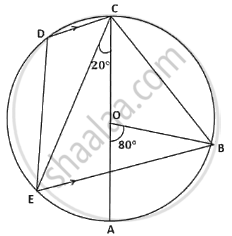Advertisements
Advertisements
प्रश्न
Prove that the circle drawn on any one of the equal sides of an isosceles triangle as diameter bisects the base.
उत्तर
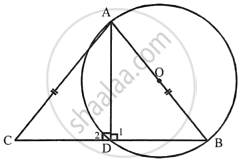
Given – In ∆ABC, AB = AC and a circle with AB as diameter is drawn
Which intersects the side BC and D.
To prove – D is the mid point of BC
Construction – Join AD.
Proof – ∠1 = 90° ...[Angle in a semi circle]
But ∠1 + ∠2 = 180° ...[Linear pair]
∴ ∠2 = 90°
Now in right ∆ABD and ∆ACD,
Hyp. AB = Hyp. AC ...[Given]
Side AD = AD ...[Common]
∴ By the right Angle – Hypotenuse – side criterion of congruence, we have
ΔABD ≅ ∆ACD ...[RHS criterion of congruence]
The corresponding parts of the congruent triangle are congruent.
∴ BD = DC ...[c.p.c.t]
Hence D is the mid point of BC.
APPEARS IN
संबंधित प्रश्न
In the figure, m∠DBC = 58°. BD is the diameter of the circle. Calculate:
1) m∠BDC
2) m∠BEC
3) m∠BAC
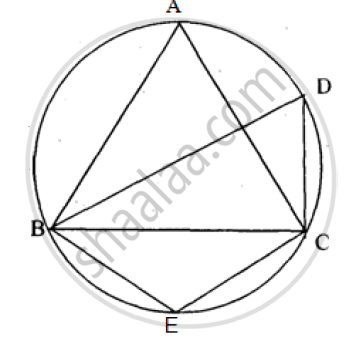
Prove that the parallelogram, inscribed in a circle, is a rectangle.
Prove that the rhombus, inscribed in a circle, is a square.
ABCD is a cyclic quadrilateral in which AB is parallel to DC and AB is a diameter of the circle. Given ∠BED = 65°; calculate :
- ∠DAB,
- ∠BDC.

In the given figure, AB is a diameter of the circle. Chord ED is parallel to AB and ∠EAB = 63°.
Calculate:
- ∠EBA,
- ∠BCD.
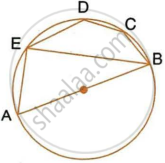
The following figure shows a circle with PR as its diameter. If PQ = 7 cm and QR = 3RS = 6 cm, find the perimeter of the cyclic quadrilateral PQRS.

In the given figure, AB is a diameter of the circle with centre O. DO is parallel to CB and ∠DCB = 120°.
Calculate : ∠DBC
Also, show that the ΔAOD is an equilateral triangle.

In the given figure, BAD = 65°, ABD = 70°, BDC = 45°.
(i) Prove that AC is a diameter of the circle.
(ii) Find ACB.
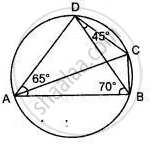
In the figure given alongside, AD is the diameter of the circle. If ∠ BCD = 130°, Calculate: (i) ∠ DAB (ii) ∠ ADB.
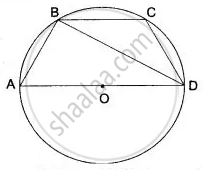
In the given figure AC is the diameter of the circle with centre O. CD is parallel to BE.
∠AOB = 80° and ∠ACE = 20°.
Calculate
- ∠BEC
- ∠BCD
- ∠CED
